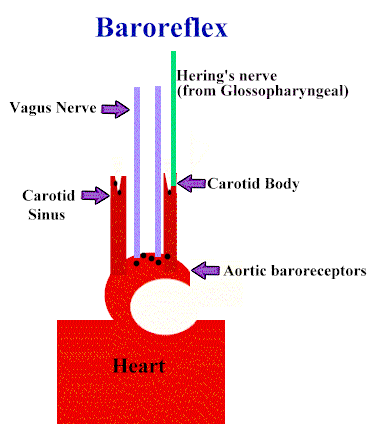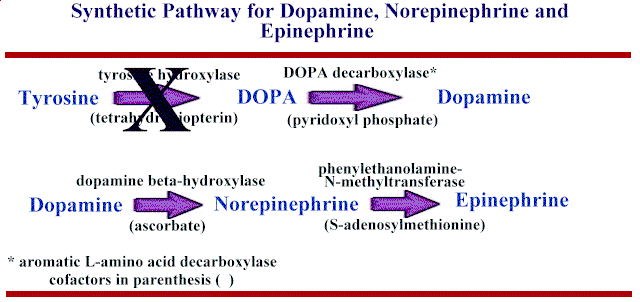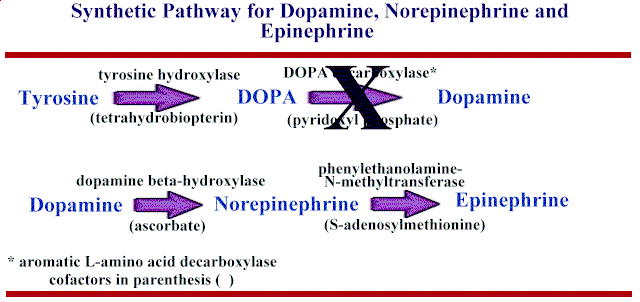-
Antatomical Site
Predominant Autonomic Tone
Arterioles
Sympathetic-adrenergic
Veins
Sympathetic-adrenergic
Heart
Parasympathetic-cholinergic
Ciliary Muscle
Parasympathetic-cholinergic
Gastrointestinal Tract
Parasympathetic-cholinergic
Salivary Glands
Parasympathetic-cholinergic
Sweat Glands
Sympathetic-cholinergic
Taylor, P. Agents Acting at the Neuromuscular Junction and Autonomic Ganglia In, Goodman and Gillman's The Pharmacologial Basis of Therapeutics,(Hardman, J.G, Limbird, L.E, Molinoff, P.B., Ruddon, R.W, and Gilman, A.G.,eds) The McGraw-Hill Companies, Inc.,1996, pp.193-195. Adapted from Table 9-3
-
-
A principal mechanism for arterial blood pressure control is the baroreceptor reflex.
-
The reflex is initiated by activation of stretch receptors located in the wall of most large arteries of the chest and neck.
-
A high density of baroreceptors is found in the wall of each internal carotid artery (just above the carotid bifurcation i.e. carotid sinus) and in the wall of the aortic arch.
-
As pressure rises and especially for rapid increases in pressure:
-
Baroreceptor input to the tractus solitarius of the medulla results in inhibition of the vasoconstrictor center and excitation of the vagal (cholinergic) centers resulting in:
-
Vsodilatation of the veins and arterioles in the peripheral vascular beds.
-
Negative chronotropic and inotropic effects on the heart. (slower heart rate with reduced force of contraction)
-
-

-
-
Pharmacological Modification of Autonomic Function


